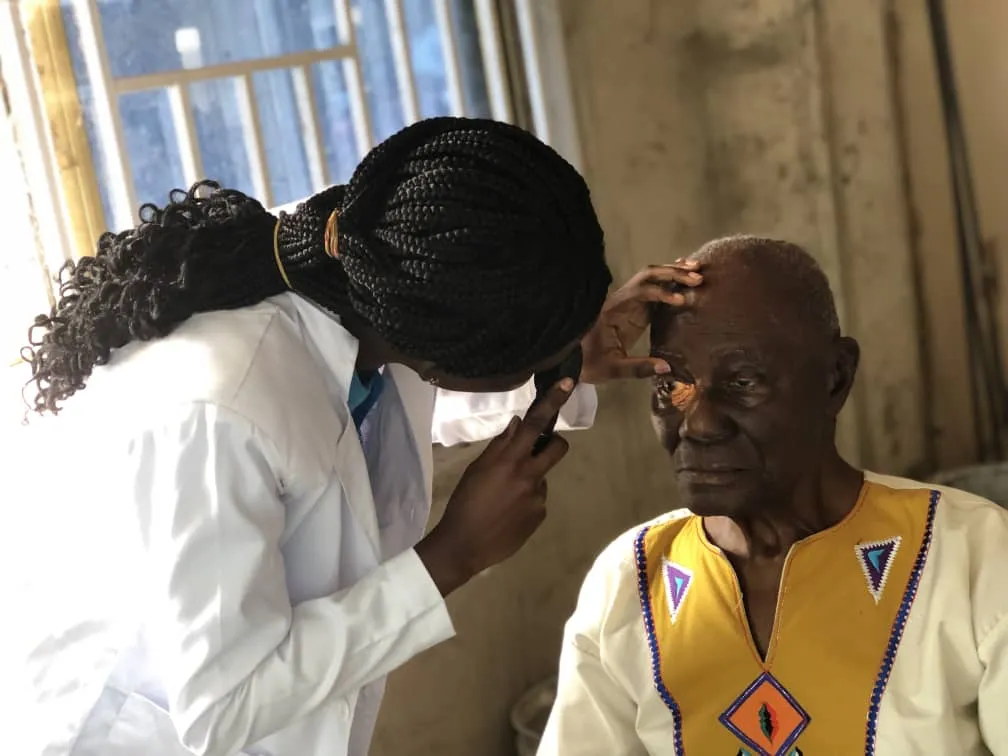Greetings to all and sundry,
I do hope we are all doing well and staying safe. It's been a while and I must certainly apologize owing to the fact that work hasn't really been easy with me as I am still adjusting to my new role as a research and teaching as within the Department of Optometry and Visual Science in KNUST Ghana.

Today I would like to discuss an interesting read I came across with regards to myopia theories and the possible research work I am looking forward to doing should I get the needed funding as lab work tends to be expensive and I may have to move to the department of biochemistry for help irrespective let me share my proposal with you.
Malondialdehyde
Oxidative Biomarkers have become an important factor to look at when you want to look at health-related issues and recently that has been eye researchers venturing into this part of research however with regards to the eye you may realize that there's not so much been done in this field.
In 1989, Simonelli et al whiles working on the levels of malondialdehyde in cataractous lenses came across an interesting finding which was that whiles lenses with cataracts had more malondialdehyde in them it was also realized that eyes that had high or severe myopia also had even more amounts or levels recorded as compared those that didn't.

This is an interesting finding indeed and one that warrants further look into it however i did not find much hence my curiosity to work on this as a thesis project to see what i can find.
Now we know that the eye works with light and that light also causes the production of free radicals through the photo-sensitizing process. This means that the eye would be one of the organs that may be prone to oxidative damage.
Now we know that malondialdehyde is an product of lipid peroxidation when free radicals work on polyunsaturated fats and lipid peroxidation brings about cell death. And basically when the eye is exposed to light and the photo-sensitizing process causes peroxidation we would have damage and death of cells and this could directly or indirectly be measured by measuring the malondialdehyde levels in the eye.
Superoxide Dismutase
In the case of superoxide dismutase, we would be looking at it in the opposite of that of the malondialdehyde in that whiles malondialdehyde acts as an end product of the peroxidation process this stops and disrupts the process to prevent reactive oxygen species from roaming about by catalyzing the dismutation of superoxide anions to hydrogen peroxide which is further broken into oxygen and water.
And so the theory is that if the amount of superoxide dismutase is high then oxidation or oxidative process would be low and that would be good for the eye. And that would mean that free radical damages could be down.

And so based on the earlier findings by Simonelli et al we could then be looking at individuals having high levels of these oxidative biomarkers potentially having myopia and then we could look at how the levels vary with myopia and we can further compare with control of non-myopic individuals as to whether this is just coincidental finding or there would be something significant to look at.
The Theory / Conclusion
And so the questions would be how do these biomarkers relate to the findings of myopia in an individual and how do they correlate the levels or severity of myopia.

Is there even any correlation at all and if any is it significant enough for researchers to pick it up and look for more information to combat the myopia pandemic that's is taking the world by storm? Many thanks to you for reading and greetings to my friends' prof @lemouth and my brother from Nigeria @gentleshaid. Stay safe and have a wonderful time
References
Inal, M. E., Kanbak, G., & Sunal, E. (2001). Antioxidant enzyme activities and malondialdehyde levels related to aging. Clinica chimica acta; international journal of clinical chemistry, 305(1-2), 75–80. https://doi.org/10.1016/s0009-8981(00)00422-8
Ateş, N. A., Yildirim, O., Tamer, L., Unlü, A., Ercan, B., Muşlu, N., Kanik, A., Hatungil, R., & Atik, U. (2004). Plasma catalase activity and malondialdehyde level in patients with cataract. Eye (London, England), 18(8), 785–788. https://doi.org/10.1038/sj.eye.6700718
Francisco, B. M., Salvador, M., & Amparo, N. (2015). Oxidative stress in myopia. Oxidative medicine and cellular longevity, 2015, 750637. https://doi.org/10.1155/2015/750637
Kim, E. B., Kim, H. K., Hyon, J. Y., Wee, W. R., & Shin, Y. J. (2016). Oxidative Stress Levels in Aqueous Humor from High Myopic Patients. Korean journal of ophthalmology : KJO, 30(3), 172–179. https://doi.org/10.3341/kjo.2016.30.3.172